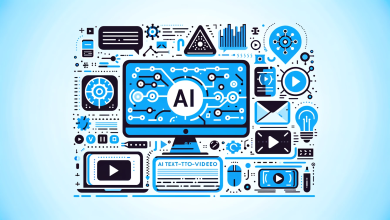
Being productive is more than just completing all your tasks. It’s about doing everything as efficiently as possible, without spending time on small tasks. Creating an order in your workday is the key to that, and all it takes is the right blend of discipline, strategy, and technology.
True productivity is defined by a smooth flow that encourages success. If you focus on the outcome instead of just checking boxes, you will eventually master how to be productive at work. This article will offer insight and tools into how to complete high-impact projects without endless stress.
What Affects Your Productivity the Most?
As a working member of society, this might not be the first time you want to increase productivity. The problem is that every time you try to be productive, something distracts you.
Here are the most common factors that affect your productivity sprees:
- Distractions: Multiple digital devices take your attention from the task at hand. Constant meetings and chat notifications virtually “reset” your attention, causing you to lose your concentration and ideas.
- Inefficient Workflow: Jumping from one tool to another causes you to waste precious time on technicalities, especially if you have to add data manually.
- Disorganized Data: Jumping from one document to another can be very confusing, leading to costly mistakes sometimes. This is especially true when you are juggling multiple PDF, DOC, and XLS documents that you use for the same project.
- Increased Research and Workload: An average of 45% of workers believe that their workload has increased significantly in the past years. Clients are asking for more within the same timeframe, leading to delays and potential hiccups in the process.
Once you identify the factors that drag you down, you should be able to come up with a plan on how to increase productivity.
Top Ways to Increase Productivity at Work
Being productive at work is easier than you might think. Here are a few strategies to keep in mind:
-
Leverage the Right AI Tools for Productivity
Technology has significantly evolved in the past couple of years, and the right AI tools for work can simplify things. For example, if you have long documents to go through, a Text Summarizer can offer you the key points. This way, you won’t have to spend endless hours reading.
Conversion and document management tools can also be very helpful. For example, if you have multiple files that you keep going back and front from, a PDF merger can help you put everything in one place. Plus, you don’t risk accidentally skipping info because you got confused by the sheer number. If all the docs are in one place, they’re easier to go through and summarize.
-
Set Task Priorities
Those who want to learn how to be productive at work are probably familiar with the pressure of multitasking. While it may give the illusion of finishing a task faster, this is more of a distraction. You can’t focus on a project if you’re thinking of the other.
A better route is to divide your tasks into the following categories:
- Urgent and very important
- Important but not as urgent
- Urgent, but not necessarily important
- Not urgent or important
Go for the urgent and important tasks first, because the other categories probably rely on them. After that, move on to the 2nd and 3rd categories. You can outsource the 4th category to different AI tools for work, to ease your job.
-
Tune Out Distractions
Distractions are the main killer of productivity. An average of 27% of workers are distracted by colleagues coming over to chat, whereas others get sidetracked when using the Internet or taking on a boring task. It’s not the time itself that’s problematic, but the effort you’ll have to go through to get your focus back.
Consider keeping your email tab while you focus on a task. If you can, you should set it on an autoresponder. Switch your chats into busy mode to keep others from contacting you with trivialities.
If you work in an office, consider putting on your headphones to block out noises. This also sends a message to your co-workers that you’re not up for chatting.
-
Batch the Tasks
Each type of task uses a different part of your brain to get the work done. It switches between modes based on context. If you answer an email, then open a PDF and work on an XLS file, your brain takes seconds to process. Still, it can be draining, and this lack of organization can affect your productivity.
A good idea is to group similar tasks and focus on one type at a time. You can set specific timeframes to organize them in documents you should finish next.
You can even merge files, so you don’t have to switch between different documents. By the time you are done with a batch, you’ll also get a motivation boost because you managed to reach that small goal you set for yourself.
-
Reduce the Clutter
Clutter leads to distractions, even more than your coworkers do. Desk or desktop personalization is not that problematic if it’s there for a reason. Still, studies show that clutter can reduce workplace performance.
Keep only the essentials within reach and surround yourself with things that motivate you. As for your computer, try to find AI tools for work that handle most of your tasks.
Using multiple tools can feel very cluttered, and bringing them down to just a few brings you space to breathe.
Final Thoughts
Being productive is not about working hard but working smart. The right tools and strategies reduce mental strain and keep you focused on what really matters. Whether you use AI tools for productivity or change your habits, you get back control over your time.





